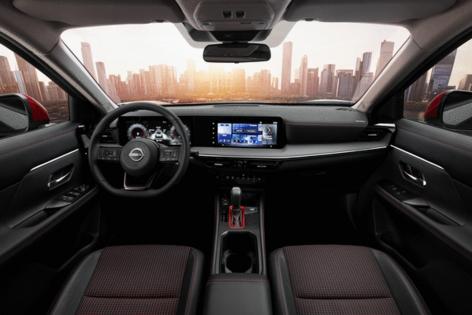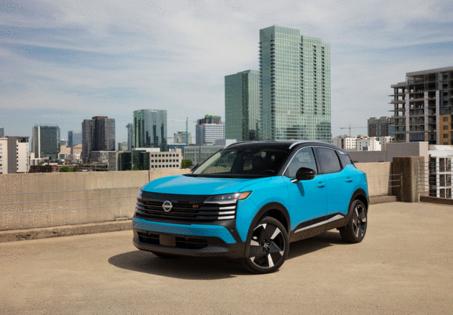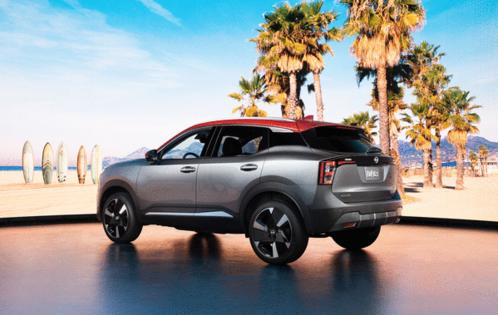Auto review: 2025 Nissan Kicks is competitive, but no standout
Published in Business News
It’s been six years since Japanese authorities arrested Nissan CEO Carlos Ghosn over allegations of false accounting. It marked the end of a tenure that had started strong, with Nissan fielding impressively rejuvenated products. But Ghosn’s vision ultimately faltered as he became consumed by increasing market share at the expense of all else. A company that once called its Maxima sedan a four-door sports car was now at a loss as to how to describe anything. Its products became commodities, bought by those looking for a good deal, not out of desire. Engineering and design calcified.
Once Ghosn was gone, tumult continued inside the boardroom as CEOs and COOs came and went.
Despite the chaos at the top, the company has been slowly freshening under the watchful eye of Alfonso Albaisa, senior vice president for global design, and Giovanny Arroba, program design director of Nissan. It’s a look best epitomized by the Nissan Ariya EV: clean, contemporary and spa-like.
It’s an ethos that’s evident from the top of the lineup to the bottom, where a redesigned 2025 Nissan Kicks hopes to lure younger buyers and empty nesters. With prices starting at $21,830-$26,180, Nissan figures they’ll snap up about 65,000 Kicks annually.
Offered in Base S, mid-level SV and top-of-the-line SR trim, the Nissan Kicks comes with front-wheel drive, which is common in this segment. What is uncommon is the option of all-wheel drive, which competitors tend not to offer in an effort to keep prices down. Yet the Nissan Rogue offers it at a price point that passes for affordability these days: $23,330-$27,680 — a $1,650 upcharge.
The Nissan Kicks competes in the B-segment alongside such competitors as the Hyundai Kona, Kia Soul, Corolla Cross and Chevrolet Trax. Of these, only the Kona and Corolla Cross offer all-wheel drive.
Stylistically, the Kicks is far more impressive, with a more sophisticated wardrobe that includes an optional two-tone paint job. More impressive is its fresh face, an upright wall of stacked vertical grille bars with integrated lighting. In the back, frowning corner lights are connected by plastic. It’s distinctive, if nothing else. But it results in the Kicks having a sporty, more monied appearance, something that could never be said of its ungainly predecessor. Sixteen-inch wheels are standard on the S, growing to 17 inches on other models.
Inside, you’ll find the typical unrelenting sea of black plastic, the only color offered. Given the realities of global warming, designers have to start using lighter colors. Black quickly transforms every surface into a scalding oven surface. Thankfully, there is a touch of orange around the transmission shifter to relieve the dreariness. And the interior has more soft-padded surfaces than you’d expect.
The instrument panel layout first seen on the Ariya is spreading to other Nissan models, including the Kicks and forthcoming redesigned Murano. Of course, the Kicks’ material quality is nowhere near as lavish as its spendier siblings. But whereas climate controls are integrated into the horizontal trim at the instrument panel’s edge on other models, on the Kicks, they’re housed below the trim strip. Still, it works at separating these controls from those on the touchscreen. Overall ambiance is simple, straightforward and sophisticated, with a modern infotainment interface and screen design.
Speaking of touchscreens, two 7-inch screens, one for the instrument cluster the other for the infotainment system, are standard on the base S model. Mid-level SV trims get a 12.3-inch infotainment touchscreen, while SR models are fitted with two 12.3-inch screens. SV and SR trims get wireless Apple Car Play and Android Apple, whereas S trims require a wire. SV and SR models also get a wireless charging pad, while SR models can be fitted with a Bose premium audio system with integrated headrest speakers. And, if you favor Big Gulps, you’ll really appreciate the larger cupholders.
The Kicks get Nissan’s Zero Gravity Seats, which provide more comfort over longer distances. Legroom is good both front and rear, and there’s as much as 30 cubic feet of cargo space with front-wheel drive; 24 cubic feet with all-wheel drive.
When it comes time to move, you’ll find steering is quick on center, but light. Ride and handling are about what you’d expect, with moderate noise at low speed, growing louder as speed increases.
Of course, you can’t expect much from under the hood. Despite the Kicks’ relatively large 2.0-liter four-cylinder engine, its output is just 141 horses. Making matters worse is its continuously variable automatic transmission, with its typical delay before offering up more power. If you need more speed, buy something pricier. In this class, fuel economy, not speed, matters most. Even so, fuel economy is about what you’d expect. Front-wheel-drive models return 31 mpg in combined city/highway driving, and 30 mpg with all-wheel drive.
The 2025 Nissan Kicks is evidence that Nissan North America is an automaker that’s rebuilding its lineup in the wake of its boardroom imbroglio. But it’s the Kicks’ style, not its engineering, that’s the improvement here. But there’s little here to surprise or delight you. It’s competitive in its class, but not the standout it needs to be against its better thought out competition.
2025 Nissan Kicks
Base price: $21,830-$27,680
Engine: 2.0-liter DOHC four-cylinder
Horsepower/Torque: 141/140 pound-feet
EPA rating (combined city/highway): 31 mpg (FWD); 30 mpg (AWD)
Fuel required: Regular unleaded
Length/Width/Height: 172/71/64 inches
Ground clearance: 8.4 inches
Payload: 915-959 pounds
Cargo capacity: 24 cubic feet (AWD); 30 cubic feet (FWD)
Towing: Not recommended
©2024 Tribune Content Agency, LLC

















Comments